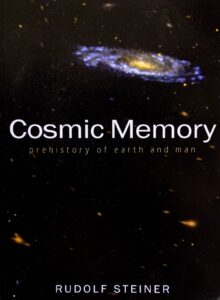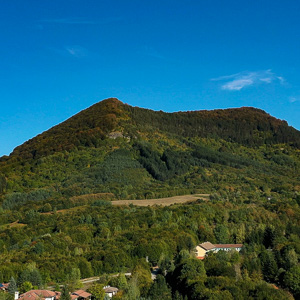The pyramid builders knew about constellations, planetary movements, Earth’s precession and the Golden ratio. They were able to create numerous and huge megalithic sites across Bulgaria. With the help of Rudolf Steiner’s reading of the Akasha Chronicle, we have identified the pyramid builders.
This is the second part of the trilogy of videos that answer the fundamental questions about the pyramids of Bulgaria.
1. When were the pyramids built?
2. Who built the pyramids?
3. Why did they build the pyramids?
We recommend watching all 3 in sequential order. The videos also answer HOW the pyramids were built.
There is a message in the pyramids of Bulgaria that tells us about the cosmic origins of humanity.

Transcript of the video documentary on WHO built the pyramids of Bulgaria?
Introduction

To answer who built the pyramids we use esoteric teachings as they offer an alternative approach through the consultation of the Akasha Chronicles. I am referring to Rudolf Steiner’s reading of the Akasha Chronicle as presented in the book Cosmic Memory, Prehistory of Earth and Man and refer to other presentations that can be found online at the Rudolf Steiner archive. I do not pretend to understand Rudolf Steiner’s work. This is just my own interpretation.
The Akasha Chronicles provide a perspective into the past of humanity that is detached from events and their subjective interpretation. It focuses on non-transitional history. The Akasha Chronicles are a repository of universal knowledge that is available for all to consult.
Rudolf Steiner does not present his reading of the Akasha Chronicles as dogma. He does not elucidate every detail of the past. Like an impressionist painter he produces an image of humanity’s distant past with a patchwork of brushstrokes that brings to life a forgotten world for which the only traces we have left are the stones before our eyes.
Rudolf Steiner’s account helps us answer the questions WHO and WHY the pyramids were built. It also explains many aspects of the pyramids that are mind boggling:
-
Why is older bigger and more sophisticated?
And how did the builders know so much about Earth, the planetary bodies, constellations without modern technology?
We will proceed to answer the question WHO built the Bulgarian pyramids by looking at the location and position of the pyramids and the shape and composition of the stones.
Location
Why do we find pyramids in Bulgaria?
Lemuria is described by Rudolf Steiner as being located in what is the Indian Ocean today. But he also says that the Lemurians spread across Africa, Europe and Asia. They were the first root race to feel the I AM.
The next root race were the Atlanteans. They marked the next stage in the evolution of human consciousness. They were located in what is today the Atlantic Ocean.
The Mediterranean region which includes the lands of Bulgaria was a natural crossroads for the 2 ancient continents.
And we see the influence of both epochs and civilisations in the stones of the Bulgarian megaliths. The oldest and biggest stones are more abstract and located underneath. They have been termed the Hanan Pacha period. They can be associated with the Lemurian epoch.
The slightly smaller megalith that are more sophisticated in shape and positioned above the older and larger stones belong to the Urun Pacha period. They are associated with the Atlantean epoch.
Atlantis was mainly located in the Atlantic Ocean but its people spread across Europe, Africa and America.
According to Rudolf Steiner the transition of humanity from the Lemurian to the Atlantean epoch happened in a land that was less turbulent:
While the part of Lemuria from which the parent race of the Atlanteans was to develop had a hot climate, it was by and large free of volcanic activity.
The middle point or transition area between Lemuria and Atlantis is the Mediterranean and its higher ground in the form of the mountains of the Rhodope and the Central Balkan where we find all the megalithic sites. Furthermore the region of the Black Sea has had periods of heat and near-tropical conditions.
Steiner’s reading of the Akasha Chronicles helps us understand why there are so many pyramids in Bulgaria and why there are distinct epochs of megalith building. Most of all he helps us answer the question WHO were the megalith builders. The earliest megaliths belong to the Lemurians whilst the later ones belong to the early Atlanteans.
Position
How did they build so many and such huge megalithic sites?
There are hundreds of megalithic sites in Bulgaria. And many are much larger than the Great pyramid of Giza in Egypt. So how did they do it?
The Lemurian Hanan Pacha epoch
As we saw the lands of Lemuria were plagued with constant volcanic activity.
For Lemuria was turbulent. After all, the earth at that time did not have its later density. The thin ground was everywhere undermined by volcanic forces which broke forth in smaller or larger streams. Mighty volcanoes existed almost everywhere and developed a continuous destructive activity. Men were accustomed to reckoning with this fiery activity in everything they did. They also used this fire in their labors and contrivances. Their occupations were often such that the fire of nature served as a basis for them in the same way as an artificial fire does in human labor today. p.80
The Lemurians had the capacity to use the volcanic activity as a source of energy.
[…] in man the forces of nature changed into forces of the will. He himself could thereby execute what nature accomplishes. p.73
Steiner gives us an answer as to how they built such huge edifices with such massive stones. They could harness the fire and magma from the volcanoes to transform nature.
The goal of the Lemurians was the development of the will, […] he could increase the strength of his arm by a simple effort of the will. For example, he could lift enormous loads merely by using his will. p.71
This explains why we find such huge megaliths teetering on the edge of hills with steep inclines. The Lemurians could control natural forces as well as their own physical strength to transform their environment.
In the earliest times they originated in the desire to give to the things of nature a man-made form. Hills were remodeled in such a way that the form afforded man joy and pleasure. Stones were put together for the same purpose, or in order to be used for certain activities. p.72
The Atlantean Uran Pacha epoch
At the next stage of human evolution the Atlanteans drew their energy not from volcanoes but from plants.
The Atlanteans could control what one calls the life force. As today one extracts the energy of heat from coal and transforms it into motive power for our means of locomotion, the Atlanteans knew how to put the germinal energy of organisms into the service of their technology. […] Think of a kernel of seed-grain. In this an energy lies dormant. His energy causes the stalk to sprout from the kernel. Nature can awaken this energy that reposes in the seed. Modern man can do it at will. He must bury the seed in the ground and leave the awakening to the forces of nature. The Atlantean could do something else. He knew how one can change the energy of a pile of grain into technical power, just as modern man can change the heat energy of a pile of coal into such power. p.43
So whilst the Lemurians used the heat and energy from the Volcanoes to create massive megalithic structures the Atlanteans took an external source of energy and applied it to shape the stone. We see these 2 different techniques in the standing stones.
The base is bigger and shaped like molten rock as if the stone was liquid and then solidified. It is the Hanan Pacha period associated with the Lemurians.
The actual standing stones are relatively smaller and shaped like putty as if the stone matter was already denser but could still be shaped like clay when applying strength and an external source of energy. It corresponds to the Uran Pacha period and the Atlanteans.
Why are the pyramids located above 200m elevation?
Talking about the Lemurians Steiner says:
They lived where nature gave them the opportunity to do so. p.72
Water levels were higher than today which explains why megaliths are only found on higher ground above 200m elevation and there are clear signs of water erosion at most megalithic sites below 400m.
And regarding the Atlanteans:
One must imagine that with the passage of time all conditions on our earth have changed very much. […] air which envelops the earth was much denser […] water on the whole earth was much thinner than today. Because of the thinness the water could be directed by the germinal energy used by the Atlanteans p.44
The Atlantean took into himself water which could be used by the life force inherent in his own body […] the Atlantean could consciously employ his physical powers […] He had the means to increase the physical powers in himself when he needed them for what he was doing.
The interesting point here is the importance of water. As we saw in Sopot the Lemurians and Atlanteans probably lived in a waterworld. Sea levels were much higher than today by at least 200m and they varied over time with regular catastrophes like mega tsunamis and massive floods provoked by tectonic plate movements.
We saw that Sopot is built as a dyke to regulate water, not to block it out completely. The rampart of Sopot is one of many similar structures that extend over 100 km. In between the ramparts there are man-made gaps. By connecting Steiner’s reading with what we see on the ground we can understand that the Lemurians and Atlanteans had a different relationship to water. It was a threat and a source of energy which they harnessed. It helped them build megalithic sites.
Does Steiner’s account of the Akasha Chronicles connect to paleontological and geological research?
In the video on WHEN were the pyramids built we concluded that the period of construction based on geological and paleontological research fits best in the Middle Miocene 12 to 16 mya which corresponds to the Astaracian age. It was a time of great development of new animal species.
And Rudolf Steiner reads:
The greatest influence on the transformation of men and animals was exercised by man himself. […] he instinctively brought organisms into such an environment that they assumed certain forms […] the transformative influence of man on nature was immeasurably great at that time, compared with the conditions of today. p82
Rudolf Steiner’s account of the Akasha Chronicles helps us make sense of what we see on the ground and answer the fundamental question of how did they build such huge and numerous megalithic sites and how did they manage to position enormous stones in precise geometrical patterns on the sides of steep hills a feat that even today would be impossible and unwilled.
Shape
Why do the stones look molten?
The granite stones of the earlier Hanan Pacha period look like they were liquid before solidifying into lumps.
The stones of the later Uran Pacha period look like putty and remind us of the glass paste that is molded by glass blowers into shape over a source of heat. We find skewer holes in the granite stone and sutures marks as if the stone had been set in a mold like a glass bottle is produced today.
The Lemurians lived at a time of constant volcanic activity. Earth’s crust was thinner, the air was denser and water was lighter. Gravity was probably different. Maybe even Earth’s orbit around the Sun was different.
The Lemurians knew how to use the energy of the volcanos to embellish the hills.
But at the time in the prevailing circumstances on Earth it was not just the rocks that were more malleable. It was also humans.
[…] the human body still had very malleable and pliant qualities. This body still changed form whenever the inner life changed. […] the soul life of man was first developed and that the still soft and malleable body adapted itself to this. pp.81-82
And the laws of physics at the time that applied to humans also applied to rocks:
This physical human body in fact received a fairly unchanging form only with […] the hardening of the rock, mineral, and metal formations of earth […] For in the Lemurian and even in the Atlantean period, stones and metals were much softer than later. p.81
The rock and pyramidal formations we see today were made possible by the circumstances that existed on Earth at the time. Air, water, matter had different densities. Stone could be worked to produce different composites, shapes and sizes that are unimaginable in the current physical conditions we live in today.
The Lemurians and Atlanteans used the inherent energy found in and on Earth to apply it to rock matter that was pliable. And today as matter has become denser and rock has hardened we see the petrified result before our eyes.
This explains why we find no tools, no machines and no industry to support such a gargantuan enterprise. They did not know tools as we do. They knew how to harness the forces of nature.
Why are there no traces of human settlements around the pyramids?
The creation of so many and so huge megalithic sites would in our mind frame and within our physical circumstances require huge amounts of people and the development of technologies and industrial capacity. Yet we do not see any traces of human settlements anywhere around any of the pyramids. Why?
An Atlantean settlement […] had a character that in no way resembled that of a modern city. In such a settlement everything was, on the contrary, still in alliance with nature. […] a settlement resembled a garden in which the houses were built of trees with artfully intertwined branches. What the work of human hands created at that time grew out of nature. And man himself felt wholly related to nature. p.45
Rudolf Steiner explains why we see so many huge megalithic constructions and yet no signs of living quarters or industrial development that would be required to build these edifices based on our standards. They lived in tune with Earth and harnessed its energy.
Why is there no figurative art?
Figurative art implies a detachment of the artist in relation to the object he is representing whether in stone or with paint.
At the Egyptian temples and tombs we see hieroglyphs. At Gobekli Tepe there are etchings of animals in the stone pillars. And at Lascaux there are cave paintings of animals.
Figurative art implies the use of language. In artistic creation like in language there is a subject, an object and the action, the verb, that binds the 2.
Rudolf Steiner points out that the Lemurians did not really have language and the early Atlanteans only had the earliest rudiments of language in the form of sounds.
They (the Lemurian race) did not have language in the true sense. […] They did not designate external objects. p70
The art we see in the shape of the stones at the megalithic sites in Bulgaria is not a personal reflection on matter. It is the mirroring of a cosmic order that infused its builders.
Composition
What does the composition of the stones tell us about the pyramid builders?
There are 2 enigmas regarding the composition of the stones at megalithic sites in Bulgaria:
- First, is the granite a man-made composite?
- Second, why does it contain quartz. We will answer this second enigma in the next video on WHY the pyramids were built.
First, are the stones at the Bulgarian megalithic sites a composite that is man-made or a natural occurrence?
We know that Lemurians knew how to use the rock ensuing from the lava flows of volcanoes.
Men were accustomed to reckoning with this fiery activity in everything they did. They also used this fire in their labors and contrivances. Their occupations were often such that the fire of nature served as a basis for them in the same way as an artificial fire does in human labor today. p.80
The Lemurian had the capacity to transform the natural stone into a composite material to fit his purpose.
[…] in man the forces of nature changed into forces of the will. He himself could thereby execute what nature accomplishes. p.73
This answers one of the mind-boggling questions regarding composition of stones not only in Bulgaria but also in Peru and other megalithic sites worldwide. Are the megaliths a natural occurrence or man-made?
Recent research at the stones of Sacsayhuaman in Peru reveal that they cannot be solely the result of a natural formation. There was some kind of human intervention in the process.
Rudolf Steiner’s account of the Akasha Chronicles elucidates this enigma. Man could harness and transform the naturally occurring rock from volcanic activity into a specific composition and shape.
In this manner he (the Lemurian) understood plants and animals in their inner action and life. He even understood the physical and chemical forces of lifeless objects in the same way. p.70
Conclusion
Rudolf Steiner’s account of the Akasha Chronicles helps us answer the fundamental question WHO built the pyramids. It also tells us HOW they did it.
As the continent of Lemuria sank in the midst of volcanic conflagrations humanity transitioned to the next stage in its evolution. The lands of Bulgaria were the bridge both physical and spiritual that took humanity on the next phase of its journey. The continent of Atlantis became the new centre for the new root race of the Atlanteans. And the lands of Bulgaria in the stone formations we still see today bear witness to this transition from one epoch of humanity to the next.
Rudolf Steiner’s account actually helps pinpoint more precisely what period of each root race built the pyramids. Each root race is divided in 7 sub-root races that represent each sub-stage of evolution.
The first Lemurians did not start building the pyramids because they existed in a dream-like state for most of the day and only saw in blurred vision. They did not know a true division between the sexes, the male and female elements were still combined. It is only in the later Lemurian period as matter became denser that the sexes were separated and that the female element developed the imagination whilst the male element developed the will. So we know that it is the later Lemurians who started building pyramids which corresponds to the early Hanan Pacha period.
The standing stones that correspond to the Urun Pacha period belong to the first subrace of the Atlanteans. They were called the Rmoahals.
We can assume this because the later sub-races of Atlanteans:
[…] the Tlavatli peoples […] began to feel their own personal value. Ambition a quality unknown to the Rmoahals made itself felt among them. p49
This ambition and personal value accompanies the evolution of consciousness and is associated with the development of language and figurative art.
So it was the late Lemurians and early Atlanteans who built the Bulgarian pyramids.
In the next video we will answer WHY they built the pyramids.


